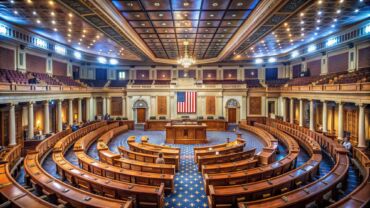IRS Notice 2018-99 (Dec. 10, 2018); IRS Notice 2018-100 (Dec. 10, 2018); IRS News Release IR-2018-247 (Dec. 10, 2018)
The IRS has issued two notices regarding provisions in the Tax Cuts and Jobs Act (TCJA) that make qualified transportation fringe benefit expenses nondeductible after 2017, and treat those expenses as unrelated business taxable income (UBTI) if they are incurred by tax-exempt organizations (see our Checkpoint article). Notice 2018-99 provides interim guidance to help taxpayers determine the parking expense amounts that are nondeductible or that increase UBTI for tax-exempt organizations. Notice 2018-100 offers relief to tax-exempt organizations that were not previously required to make estimated income tax payments and failed to make such payments in connection with UBTI resulting from their qualified transportation fringe expenses. Here are highlights:
-
Nondeductible Parking Expenses. Under Notice 2018-99, the amount of parking expenses that will be treated as nondeductible—or will result in UBTI for a tax-exempt organization—depends on how the parking is provided. If the employer pays a third party for employee parking, the nondeductible expense is simply the amount paid to the third party, up to the monthly limit on qualified parking benefits (e.g., $260 for 2018). Payments over the monthly limit are not excludable, so they are treated as employee compensation and unaffected by the rule disallowing deductions for qualified transportation fringes. But if the employer owns or leases a parking facility, it can use “any reasonable method” to determine the portion of the expense that is nondeductible, pending further guidance. (Using the value of the parking, as opposed to the expense to the employer, is not a reasonable method.) The guidance outlines a four-step method—with helpful examples—that will be deemed reasonable. First, the nondeductible amount attributable to reserved employee spots is determined. Second, a “primary use” test is applied to determine whether the expense for any of the remaining spots must be nondeductible. If more than 50% of the actual or estimated use—including available but unused spots—is for the general public, no further allocation is necessary; the remaining expense is deductible. If the primary use of the remaining spots is not for the general public, the third step is to determine the deductible expense attributable to reserved nonemployee spots. Finally, use of the remaining spots must be “reasonably” allocated between employee and public usage during normal business hours on a typical business day based on the number of spots, the number of employees, hours of use, or other measures. Employers that want to eliminate reserved employee spots to restore some or all of their deduction may do so retroactively to January 1, 2018, if they act by March 31, 2019.
-
UBTI of Tax-Exempt Organizations. Notice 2018-99 affirms that the rules for determining the UBTI attributable to qualified transportation fringes provided by a tax-exempt organization necessarily mirror the rules for other taxpayers. However, tax-exempt organizations with only one unrelated trade or business will be allowed to reduce their UBTI by the amount of any (unused) deductions that exceed the gross income of that trade or business. Also, organizations whose total UBTI, including UBTI attributable to qualified transportation fringes, is less than $1,000 do not need to file Form 990-T (Exempt Organization Business Income Tax Return) or pay tax on their UBTI.
-
Waiver of Additional Tax Attributable to Underpayment of Estimated Income Taxes. Notice 2018-100 grants certain tax-exempt organizations a waiver of the usual penalty for underpaying estimated taxes, but only “to the extent” the underpayment “results from” the changes to the tax treatment of qualified transportation fringe benefits. The waiver applies only to organizations that were not required to file Form 990-T for their last taxable year ending before 2018, that timely file their Form 990-T, and that timely pay the reported tax. (Other potential exceptions are unaffected.) To claim the waiver, organizations must write “Notice 2018-100” at the top of their Form 990-T.
EBIA Comment: The deduction and UBTI changes made by the TCJA and addressed in these notices have no effect on the income exclusion for qualified parking benefits received by employees. The changes have complicated employers’ taxes, however, especially for tax-exempt organizations that previously had no reason to file Form 990-T. This interim and transitional relief should help, but more guidance is needed, and Notice 2018-99 announces that the IRS intends to propose regulations on this subject. The notice also requests comments on various issues, including whether Code § 274(e)(8), which preserves the deduction for expenses for goods and service “sold by the taxpayer in a bona fide transaction for an adequate and full consideration in money or money’s worth,” might be used to preserve the deduction for some qualified transportation fringes. Many qualified transportation benefits are, in effect, “sold” to employees through pre-tax salary reductions, so the IRS’s handling of that issue will be of interest. For more information, see EBIA’s Fringe Benefits manual at Section XX.T.1 (“Code § 274: Employer Deduction Unavailable for 2018 and Later Years”).
Contributing Editors: EBIA Staff.







